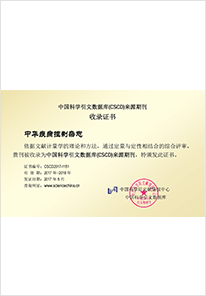2024 Vol. 28, No. 2
Display Method:
2024, 28(2): 125-130.
doi: 10.16462/j.cnki.zhjbkz.2024.02.001
Abstract:
2024, 28(2): 131-137.
doi: 10.16462/j.cnki.zhjbkz.2024.02.002
Abstract:
2024, 28(2): 138-145.
doi: 10.16462/j.cnki.zhjbkz.2024.02.003
Abstract:
2024, 28(2): 152-160.
doi: 10.16462/j.cnki.zhjbkz.2024.02.005
Abstract:
2024, 28(2): 176-182.
doi: 10.16462/j.cnki.zhjbkz.2024.02.008
Abstract:
2024, 28(2): 183-190.
doi: 10.16462/j.cnki.zhjbkz.2024.02.009
Abstract:
2024, 28(2): 198-202.
doi: 10.16462/j.cnki.zhjbkz.2024.02.011
Abstract:
2024, 28(2): 203-208.
doi: 10.16462/j.cnki.zhjbkz.2024.02.012
Abstract:
2024, 28(2): 209-214.
doi: 10.16462/j.cnki.zhjbkz.2024.02.013
Abstract:
2024, 28(2): 215-220.
doi: 10.16462/j.cnki.zhjbkz.2024.02.014
Abstract:
2024, 28(2): 228-232.
doi: 10.16462/j.cnki.zhjbkz.2024.02.016
Abstract:
2024, 28(2): 233-240.
doi: 10.16462/j.cnki.zhjbkz.2024.02.017
Abstract:
2024, 28(2): 241-248.
doi: 10.16462/j.cnki.zhjbkz.2024.02.018
Abstract:


 Email alert
Email alert RSS
RSS Abstract
Abstract HTML
HTML PDF
PDF





